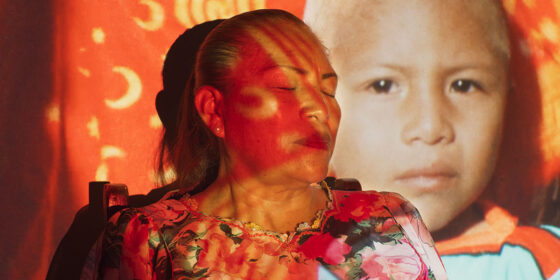TIFF 2023 | God Is a Woman (Andrés Peyrot, France / Switzerland / Panama) — TIFF Docs

By Angelo Muredda
French filmmaker and ethnographer Pierre-Dominique Gaisseau’s unfinished portrait of the Kuna people becomes the scene of a postcolonial autopsy in Andrés Peyrot’s absorbing documentary God Is a Woman. Peyrot’s film follows the contemporary interventions of Kuna elders and intellectuals such as poet and professor Arysteides Turpana and filmmaker Orgun Wagua, who seek to restore, contextualize, and screen Gaisseau’s footage to the community whose images were distorted and plundered for Western consumption in the original, unreleased documentary.
Wagua articulates the representational stakes of this project when he tells Peyrot that he starts workshops with Indigenous filmmakers by asking them to consider how others see them, and how they see themselves. Peyrot is adept at exploring these profound aesthetic and ideological questions about who owns non-fiction footage of Indigenous people and who is accountable for the way it circulates. Turpana makes an especially compelling subject, recounting an enervating anecdote about Gaisseau refusing to photograph local women with plastic water bottles—lest a European viewer believe he was not situated among true Indigenous people—with a mix of anger and bemusement. He’s unsparing in his diagnosis of the way Western cultural lenses simultaneously fail to see Indigenous subjects yet successfully propagate images of them that travel around the world.
Turpana’s death early into the making of this film leaves its mark on the documentary, which can get shiftless in his absence. His sharp critical voice is missed in the more impressionistic back half, where community members react to a public screening of Gaisseau’s footage, which is sometimes projected onto their faces in dreamy interludes. This material is moving, though as it goes on it becomes a bit maudlin, feeling generically redemptive about the power of cinematic representation. Yet by consciously amplifying the words, music, and visual art of a new generation of Indigenous artists in Panama in the final act, Peyrot also makes an effective memorial for those like Turpana who have made it their life’s work to advance Kuna culture. This look to the future attests to the contemporary aliveness of a culture that the previous filmmaker saw only as historical; as Turpana says in protest of the European tendency to view Indigenous people as frozen in time following the imposition of Western colonialism, “We do modern things now.”
Angelo Muredda

